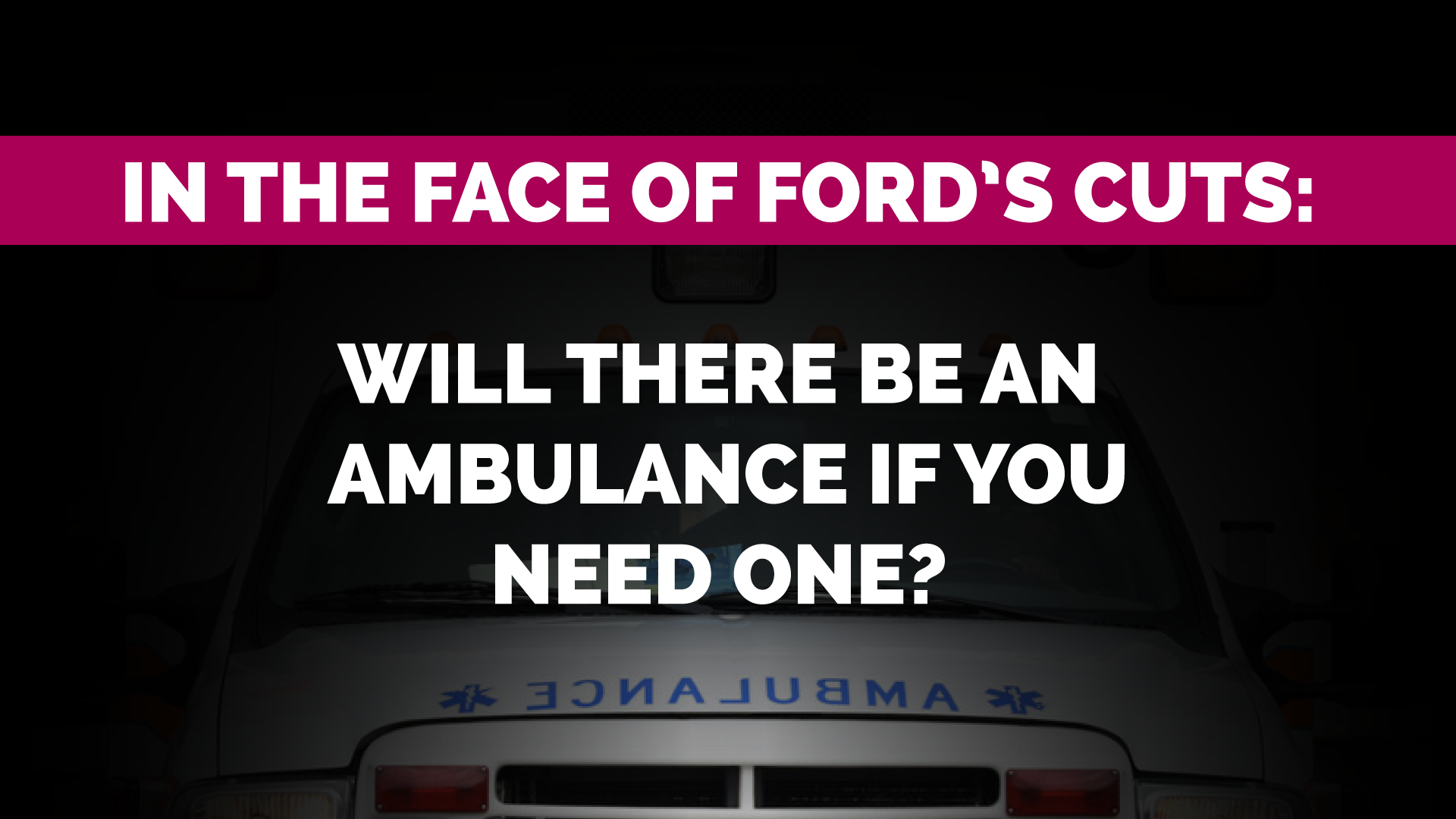TORONTO, ON – In the week since the Ford government announced it is freezing land ambulance grants at 2017-2018 levels, municipalities have been scrambling to sort out the full impact of what could be a cut of $40-50 million province-wide. Ontario paramedics, the bulk of whom are represented by the Canadian Union of Public Employees (CUPE), are questioning how it will be possible for municipalities to absorb a cut that large without negative effects to service levels.
“We are already seeing regular code zeros – these are times when no ambulances are available to respond to emergencies,” said Jason Fraser, a paramedic and chair of CUPE’s ambulance committee of Ontario (CACO). “And we know that land ambulance calls are increasing at a rate of at least 3.5% per year . So how does the system absorb a funding shortfall of this magnitude? Can the Ford government assure Ontarians there will be an ambulance there when they need one? Paramedics are on the front line every day, and we know what the impact of this freeze will be. It starves an already over-taxed system.”
Over the last several years, the province has funded 50% of municipalities’ costs for ambulance services, with that funding based on prior-year cost, plus an increase for inflation and additional costs. (The exceptions are First Nations ambulance services, dispatch centres, and base hospitals, which are all funded at 100% by the province). In freezing this year’s transfer at 2017 levels after municipalities have already set their budgets, the Ford government is forcing communities to absorb another in-year budget cut, this one amounting to $40-50 million across Ontario.
“Information on the impact of this latest cut is trickling in across the province,” said Fraser. “Waterloo Region, in response to escalating demands and ambulance shortages, had budgeted for a new 24-hour ambulance to go into service this year, and the addition of ten full-time equivalent (FTE) positions. We are told those hires might be on hold because they are absorbing a hit of $1.2 million.”
“In Leeds Grenville, the paramedic service has determined it must now absorb a 2019 cut of $585,400. They were supposed to hire five new advanced care paramedics starting this fall. Is that on hold now? We don’t know. If it isn’t, what else will be eliminated to absorb this cut?”
“In Durham Region, it looks like they will now be forced to absorb a cut of $1.75 million. How will that look? What kind of service roulette do the municipalities have to play in order to absorb this totally unexpected cut from the Ford government? If we want ambulances to be available when we call, what else has to be slashed? Who voted for this?”
CUPE will continue to monitor the effect of this cut as municipalities grapple with the full impact of it and it becomes clearer where the pain will be. “We might not know for a while exactly how this cut will play out. But whether it’s the ambulance that isn’t there when your child goes into anaphylaxis, or the child care space that isn’t available because your city had to cut elsewhere to make up this shortfall, it all has Doug Ford’s name attached to it,” said Fraser.
CUPE represents roughly 5500 paramedics in Ontario.
-30-
For more information, please contact:
Andrea Addario, CUPE Communications, (416) 738-4329 COPE491/EW
[1] https://www.amo.on.ca/AMO-PDFs/Reports/2016/ExpandingMedicalResponsesDiscussionPaperMOHLTCNov2.aspx

